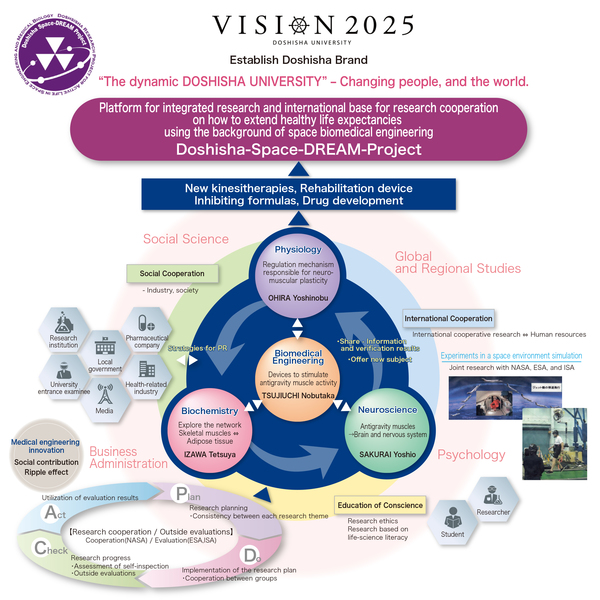Research Outline
Doshisha Space-DREAM Project
Doshisha Research Project for Active Life in Space Engineering and Medical Biology
The research subject of the Doshisha Space-DREAM Project is the new academic discipline, space biomedical engineering, which conducts experiments in low-gravity simulated environments. Expanding upon this subject, the project engages in research connected to practical applications for various medical endeavors, including new kinesitherapies for astronauts and those with trouble walking, developments in strategies and equipment for rehabilitation, and drug development. Furthermore, by conducting international joint research with the NASA Johnson Space Center, UC System schools (University of California at Los Angeles and San Diego) in the United States, University of Genoa in Italy, and other academic institutions, the project aims to produce distinctive research results and develop globally minded human resources who can take on any challenge.
Exposure to lower gravity of outer space induces atrophy of antigravity muscles and changes of protein and gene expression in brain, which lead to locomotive syndrome, and it has been reported that astronauts experience the difficulty of walking immediately after the return to the Earth. Similar phenomena are triggered on the Earth in response to aging and being bedridden, and such skeletal muscle atrophy and physical inactivity are known to lead to metabolic syndrome. Thus, the major purpose of this research project is to promote the integrated research related to human health, such as science and engineering, life and medical sciences, health and sports science, and brain science, using the results of experiments under low-gravity simulated environments.
